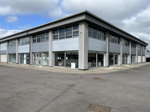Should dealers take any notice? Those with cars that are featured in the best buys top 20 clearly should use the results to boost their appeal to customers – but note that all these cars were launched less than five years ago, and several less than two. And the majority are premium brands.
Dealers selling cars in the so-called ‘top 10 to steer clear of’ shouldn’t worry, though. Seven of the models are no longer in production and the survey is unlikely to hit prices in the used market. In addition, one model, the Chevrolet Matiz, is based on a design that is almost 10 years old.
And that’s the big issue with surveys of this type. Why should anyone be shocked that cars launched 12 years ago (like the Rover 200/25) are not as safe or fault adverse as new models like the Nissan Note? Technology, research, materials and regulations have all moved on and new cars are much better quality. It’s unfair – and pointless – to try and compare such a wide range of model ages.
So what’s next? It shouldn’t be long before the next survey lands in the laps of the national media lambasting franchised dealers for ripping off customers.
What I’d like to see is an investigation calculating the real cost of repair, incorporating labour rates, parts costs and – importantly – time taken to repair, free services like valeting, collection and delivery, and any rework costs.
In simplistic terms, a repairer charging £100 per hour but taking two hours to do a job with no rework charges because of the investment made in equipment and staff training, and who valets the car, is a better option than a repairer charging £50 per hour but taking four hours with no freebie offers.
Perhaps AM should carry out the survey. The results would reveal the true picture in the aftermarket. What do you think?













Login to comment
Comments
No comments have been made yet.